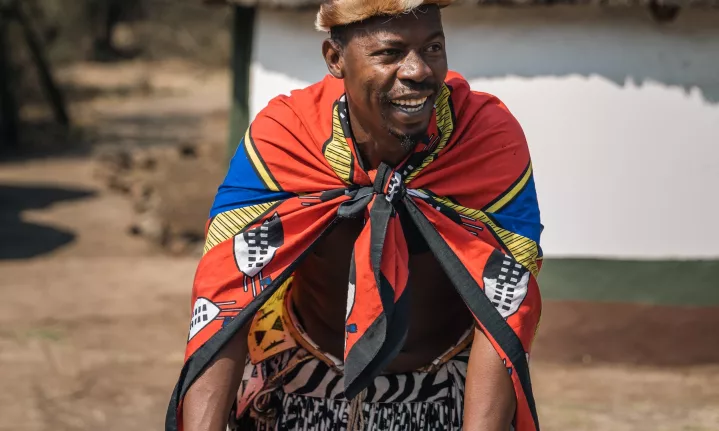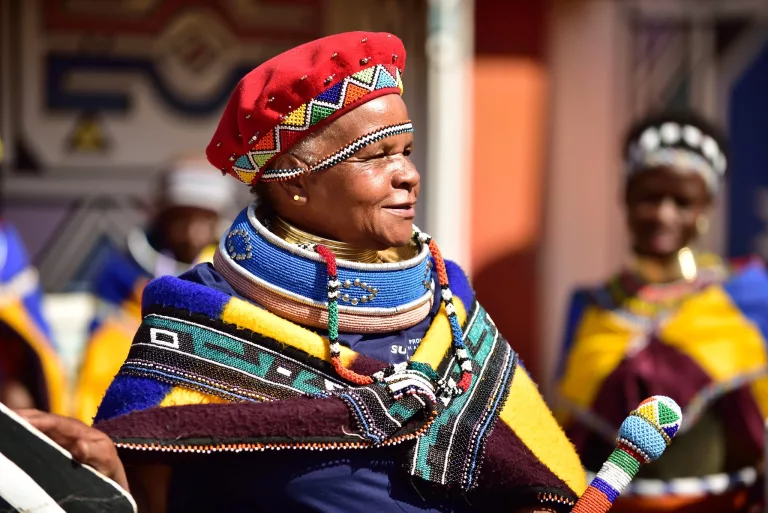The 25-Second Trick For South African Culture Today
The 25-Second Trick For South African Culture Today
Blog Article
South African Culture Today - Questions
Table of ContentsHow South African Culture Today can Save You Time, Stress, and Money.South African Culture Today Fundamentals ExplainedSouth African Culture Today Can Be Fun For EveryoneThe smart Trick of South African Culture Today That Nobody is Talking AboutThe 9-Second Trick For South African Culture TodayRumored Buzz on South African Culture Today
This adheres to with vocal singing and drum pounding. The new bride and bridegroom then satisfy with the elders and speak about the value of their union. An issue of importance in Zambian villages is the diing of enjoyed ones. All members of the village placed cash, time and effort together for the interment of the deceased.Songs and dancing is a really crucial element of the Zambian culture. The different tribal systems have their very own dance kinds; nonetheless, makishi is usual among all people.
Everything about South African Culture Today
When it concerns songs, drums are used one of the most, with a range of drumming events. In Zambia, majority of individuals are Christian; Protestant and Roman Catholic. There are little groups of Muslims and Hindus, with the remainder following regional native tribal ideas.

South African heritage and culture is exceptionally varied, and includes many different groups of people who each have their very own traditions and ideas. Having such a variety of individuals and societies is what makes South Africa so one-of-a-kind. In real sense of the expression, we are a rainbow country.
Making it the 7th on the listing of countries with the most Portuguese individuals in it outside of Portugal. Portuguese is not just a culture, but it is also a language and a race. Portuguese individuals originate from the nation of Portugal in Europe, nonetheless, due to Portugal (like lots of other countries in Europe) discovering the globe and dominating other nations throughout the 15th 20th centuries, South Africa has what we call Portuguese South African's living in it.
Not known Facts About South African Culture Today
Among the prominent features of the topography is a plateau that covers virtually 2 thirds of the center of the nation. The plateau complex increases towards the southeast, where it climaxes in the Drakensberg array, part of a cliff that separates the plateau from the coastal locations. The Drakensburg includes Champagne Castle, the highest height in the country.
The region north of the Witwatersrand, called the bushveld, inclines downward from eastern to west toward the Limpopo River, which develops the global border. The western area of the plateau, the middleveld, additionally descends towards the west and differs in elevation between the highveld and bushveld. In between the Drakensburg and the eastern and southerly coastline, the land descends to the sea.
Nearer the coastline there is a low-lying level called the eastern lowveld. Southwest of the plateau the country ends up being considerably more arid, paving the way to the stony desert of the Great Karroo, approached the eastern by the reduced, much better sprinkled plateau of the Little Karroo. Separating the dry southerly inside from the sandy coastal of the southerly coast and West Cape is one more variety, the Langeberg.
Getting My South African Culture Today To Work
The country's racially, ethnically, and politically separated background has produced national and subnational icons that still operate as icons of the nation, and others signs that are accepted only by certain teams. The monoliths to white inhabitant conquest and political supremacy, such as the Afrikaner Voortrekker ("pioneer") Monument in Pretoria and the Rhodes Monolith recognizing the British colonial empire building contractor and Cape prime preacher Cecil Rhodes, continue to be sectarian signs.
The very first contemporary residents were the San ("bushman") hunter-gatherers and the Khoi ("Hottentot") peoples, who rounded up animals (South African culture today). The San may have existed for thousands of years and left proof of their visibility in countless ancient cave paints ("rock art"). Bantu-speaking clans that were the ancestors of the Nguni (today's amaZulu, amaXhosa, amaSwazi, and vaTsonga individuals) and Tswana-Sotho language teams (today's Batswana and Southern and Northern Basotho) moved below eastern Africa as early as the fifteenth century

The two previous republics of the Orange Free State and Transvaal (South African Republic) were established by Afrikaner inhabitants that defeated and dispossessed the Basotho and Batswana. Lesotho would have been by force incorporated into the Orange Free State without the expansion of British security in 1869. The best unification of the country arised from the South African Battle (18991902) between the British and both Afrikaner republics, which lowered the country visit the website to spoil at the start of the twentieth century.
Afrikaners historically considered themselves the only real South Africans and, while granting full citizenship to all citizens of European descent, refuted that status to people of shade till the democratic shift of 1994. British South Africans preserve a sense of cultural and social link to Great Britain without compromising their identification as South Africans.
Things about South African Culture Today
The variety and fragmentation within ethnic collections and the balance of stress between those groups during the twentieth century stopped interethnic civil problem. While intergroup stress over resources, entitlements, and political prominence remain, those problems are as most likely to match Zulu versus Zulu as Zulu versus Xhosa or African against Afrikaner.
From colonial India, British merchants and managers brought the bent steel decorative roofings and slender lace work columns that still represent the verandas of cottages arounds and cities throughout the country. Holy places add a vital building aspect also in the tiniest towns. In addition to the skyrocketing steeples and timeless stonework of Afrikaans Dutch Reformed churches, Anglican churches, synagogues, mosques, and Hindu temples provide variety to the spiritual architectural scene.

Slaughtering and the developing of standard grain beer are vital in safeguarding the participation and a good reputation of the ancestors who are considered the guardians of great lot of money, prosperity, and wellness. Indian neighborhoods maintain their native cooking practices and his explanation use them on Islamic and Hindu ritual and ritualistic celebrations. Afrikaners and Coloured individuals collect at weekends and special celebrations at multifamily bbqs called braais, where community bonds are enhanced.
Due to the fact that this was the primary economic business of both black Africans and white colonists, problem between those groups fixated the belongings of grazing land and livestock. In 1867, the largest diamond deposits on the planet were uncovered at Kimberley in the west main location. The wide range from those areas aided fund the exploitation of the best gold coral reef worldwide, which was uncovered on the Witwatersrand in 1886.
Some Known Factual Statements About South African Culture Today
This brought about misconceptions and purposeful misrepresentation in the dealings of white settlers and government officials with African principals throughout the early american duration (South African culture today). In the facility of African books, some facets of common and primarily "tribal trust" land period were protected, and even in white he has a good point rural locations, kinds of common tenure were still practiced in areas with African areas
After the autonomous change of 1994, programs for land restitution, redistribution, and reform were set up, however progress has been slow-moving. The white minority still controls eighty percent of the land. In the wake of farming land intrusions in Zimbabwe, the Division of Land Matters has actually promised to speed land redistribution.
Report this page